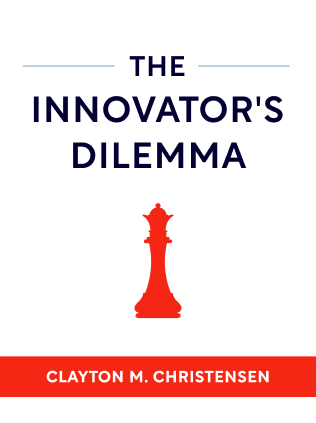

This article is an excerpt from the Shortform summary of "The Innovator's Dilemma" by Clayton M. Christensen. Shortform has the world's best summaries of books you should be reading.
Like this article? Sign up for a free trial here .
What is resource dependence theory? How does it apply to innovation in The Innovator’s Dilemma?
Resource dependence theory is a concept that explains how customer and investor resources drive innovation. If their needs are not being met, innovation will fail because it won’t have the resources it needs.
Read more about resource dependence theory and how it applies to innovation.
Innovation Principles and Resource Dependence Theory
Established firms generally struggle to survive disruptive innovations, but if managers understand the governing principles of disruptive technologies, they can weather the storm or, at best, harness them for their success. Companies that don’t know what they’re up against or how to navigate it will almost surely succumb to disruptive technology’s takeover.
Consider this analogy: When humans first attempted to fly, they attached wings to their arms, jumped off of tall objects, and flapped as hard as they could. They soon discovered that the methods that worked for birds didn’t work for humans. However, when they learned about the forces at work—such as gravity and the concepts of drag, lift, and resistance—they were able to harness these principles and eventually take flight.
Through the next five chapters, we’ll explore each of the five principles of disruptive technology, illustrate how they create problems for established companies, and offer solutions to navigating them. The five principles are:
- Customers and investors dictate a company’s resources.
- Small markets can’t keep big companies alive.
- Companies can’t rely on market research for unknown and emerging markets.
- A company’s capabilities in one context are its disabilities in another.
- Customers don’t always want the newest technological advance.
We’ll start by discussing Principle #1 and talking about a few case studies that illustrate how this principle played out in several industries.
Customers and Investors Are Critical to Resource Dependence Theory
Although company leaders appear to be in control of an organization’s decisions and direction, the resource dependence theory states that customers and investors are the primary deciders of a company’s actions. This is because customers and investors provide the resources the company needs to stay in business, so everything the organization does essentially is in an effort to keep them happy.
Problem: Resource Dependence Theory Impedes Disruptive Innovation
Generally, the strategy of satisfying customers and investors is not only effective but also essential to a company’s survival. However, as we talked about, disruptive technologies are inherently unappealing to current customers, and the low profits they offer are also unattractive to investors. Consequently, this approach causes established firms to neglect disruptive innovations until they’ve improved enough to be attractive to current customers—and by then, it’s too late.
The culture that grows out of resource dependence theory impacts everyone in the company: From the senior managers down to the most junior employees, everyone knows what kinds of work is good for the company and for their personal careers.
Even if a manager decides to take a chance and pursue a disruptive innovation, everyone working on the project needs to believe in it in order for it to be successful. If team members don’t believe in the disruptive project, they make innumerable small day-to-day decisions—such as prioritizing their time toward other assignments—that’ll ultimately starve the project of the effort and attention it needs to succeed.
Solution: Create an Independent Organization
Rather than trying to convince employees to back a project, company leaders can create an independent entity—preferably in a separate physical location—to lead the development and marketing of the disruptive product.
The parent company’s culture and organization are built to succeed in its existing market, but the independent organization needs the separation to be able to develop the culture and cost structure that fit the disruptive innovation.
Resource Dependence Theory in the Ink-Jet Printing Industry
When ink-jet printing was introduced, it disrupted the laser-jet printing market. Although the new printers had lower resolution and higher cost-per-page, they were also smaller and cheaper per unit than the larger, higher-quality laser-jets.
Hewlett-Packard created a new entity and put it in Washington state to create physical and organizational separation from its main business in Idaho. HP executives even allowed the primary and the disruptive businesses to compete against each other in the market. This benefitted HP in multiple ways:
- It continued to earn laser-jet profits while the technology was dominant in its value market.
- It successfully commercialized the disruptive innovation and brought in profits from its ink-jet organization.
- If laser-jet sales declined with improvements in ink-jet capabilities, HP’s strong presence in the ink-jet market would help the company keep its former laser-jet customers.
Although one of HP’s businesses could end up killing the other, the company positioned itself in the best way to ride the transition from old to new technology.

———End of Preview———
Like what you just read? Read the rest of the world's best summary of Clayton M. Christensen's "The Innovator's Dilemma" at Shortform .
Here's what you'll find in our full The Innovator's Dilemma summary :
- Christensen's famous theory of disruptive innovation
- Why incumbent companies often ignore the disruptive threat, then move too slowly once the threat becomes obvious
- How you can disrupt entire industries yourself






